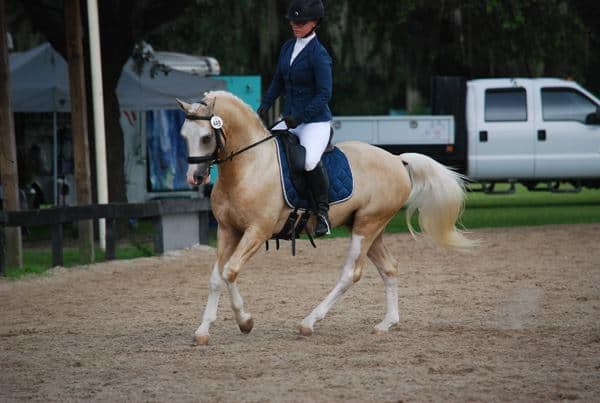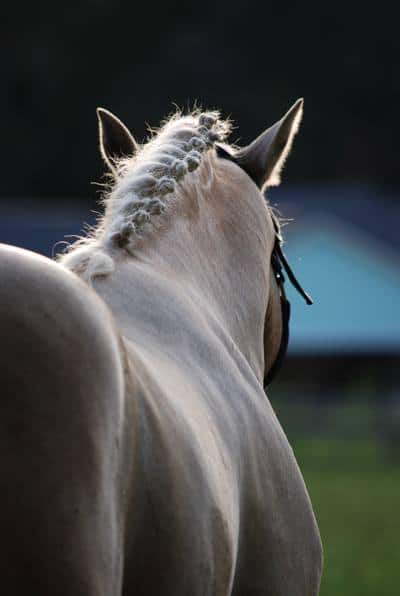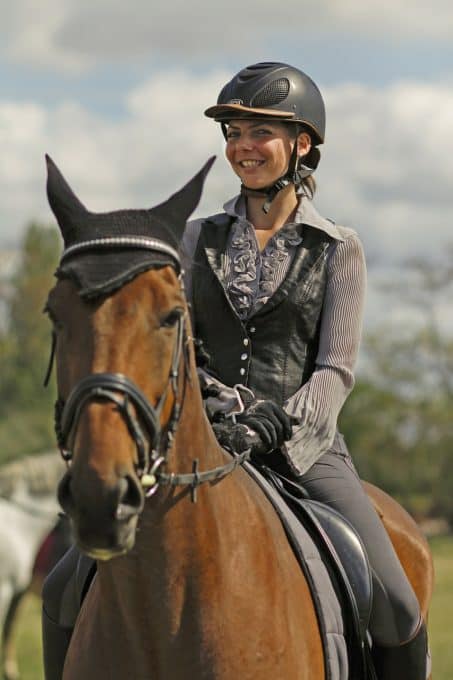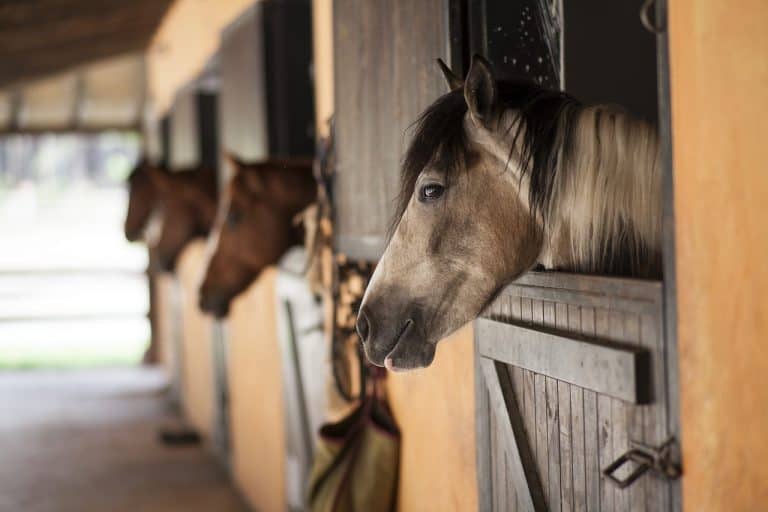Circles
UGH! Why?
When I was young and competing in 3-Day-Eventing my instructor would make me ride circles all the time. And I hated it. I didn’t understand why I needed to ride those damn circles or why they had to be so perfect. I just wanted to go jump. Maybe if my instructor had explained the “why” in a way I could have understood it, I would have been happier to work on circles. Maybe she did and I didn’t listen. That is always possible. But I want to help you understand why circles are good. And why they are the foundation of any good training system.
If you can picture a wide receiver in a football game. Once he catches the ball, he looks like he is leaning back, and each step looks like it covers 5 yards. The wide receiver runs with his shoulders back, his butt underneath him and that is how he takes those ginormous steps. This is how he can cover so much ground with each stride. And why it looks so easy for him.
Whereas when I run, I lean forward, with my shoulders in front of my hips and I pull myself along. It is not pretty at all. Well, we want our horses to move more like the wide receivers. We want them to lift their shoulders and get their butts underneath themselves. We want them to cover as much ground as possible as effortlessly as possible.
So, we start this process with the circles. Usually a 20-meter circle. We ride circles to get the horses’ inside hind legs forward and under their belly and our seat. And this is also where you start hearing that “inside leg to outside rein” phrase over and over. This stretching and engagement develops the back and hind quarter. And eventually lifts the shoulders.
Circles are used to develop the horse’s suppleness, engagement, and balance. They are the basis of dressage and when ridden correctly, circles can also help to improve the horse’s rhythm, tempo, and relaxation. I know it sounds like circles are a miracle cure. But that is why circles are an essential part of dressage training. Or any training process for that matter. Because we are the physical therapist of our horses. And it is our job to teach the horse to use their body in the most efficient way.
Circles also give us more control. They are especially helpful with young horses. If your horse is already bending on the circle, he will have a difficult time looking out so he will remain more focused on his job. And if anything should happen and you need to put him in a one-rein halt he is halfway there. Most trainers, that I know start by riding a horse on a 20-meter circle just as if they were lunging.
The hardest part for the rider about riding circles is we must retrain our brain. As humans when we think turn left, we automatically use our left arm and rein and most of us lean forward or to the left. But when we do this, we pull the horse off balance and onto their left shoulder. We must learn how to push the horse around the corner and stay balanced in our saddle. The other thing that is quite common when turning our horses is leaning forward. When we lean forward our seat bones come out of the saddle, and we can no longer turn with our seat and legs. We are therefore forced to turn with our reins. Reins should be a secondary aid. Not a primary aid.
Horses will argue with pulling but they don’t argue with a push. We have to remember that horses move away from pressure and under our weight so if we are leaning to the inside of our circle our horse is going to be leaning to the inside as well.
When I talk to my students about this I have them focus on turning with their belly buttons and keeping their shoulders and hips in line. Elbows stay bent and elastic at the waistband of their pants, so that the reins create a tunnel. And the rider focuses on the “points” of their circle. This idea helps riders to feel how their seat bones engage with the horse’s back. It also allows them to feel why the inside rein is considered a hallow rein.
So, some of you are thinking, circles don’t have points. That is true. However, when students are learning to ride with their seat and leg this method helps. I encourage my riders to pick 4 points. For the 20-meter circle at B, these points include H, E, F, and B. To start the circle, the rider pretends to ride the short diagonal from B to H until just before the center line. Then they focus on riding from the centerline to E. From E they ride the short diagonal from E to F. From the centerline they focus on B. I have found that is method helps my students stay in the middle of their saddle without pulling or leaning while maintaining the size of their circle. The size of the circle is important and is directly related to the level of training of the horse and rider.
Circles help to improve a horse’s lateral suppleness, which is the ability to bend its body evenly from side to side. Horses like us have a dominant side and a weaker side. So, riders will not get the same result in each direction because we are not able to communicate the same on both sides. So, we need to work with our horses so that our weaker sides develop and get stronger. Circles also help to improve a horse’s longitudinal suppleness, which is the ability to bend its body up and down. And they help the riders coordinate their aids and work on becoming more ambidextrous.
And that is why dressage benefits horses from all disciplines. If you can bend a horse around a 10-meter circle without pulling on that inside rein just imagine the rollbacks you can get in the jumper ring. And a tighter roll-back will save you time. If you can do a 10-meter rollback with a balanced horse you can get to the next jump quicker and still be balanced and ready to jump. If you try that 10-meter rollback with an inside rein and unbalanced your horse are going to be pulling a lot of rails.
It kills me to see these riders in the jumper ring that think they are going to win by running to the jumps. Yes, jumpers is a timed event but you will save so much time by having more control over your horse. When I took my niece to the Pony Jumper Championships, there were riders and trainers there that had come from every state in the nation. It is a long haul from California to Kentucky. And some of those ponies had to take the entire ring to turn. They were running so fast and had no control and many never got past the welcome round. (Being the cheap person that I am, all I could think was; Wow, that was about $3000 per minute.)
For all these reasons, circles are an essential part of dressage training. They are a versatile tool that can be used to improve a horse’s many ways as well as help you coordinate your aids. You can never do too many circles. If you are looking to improve your horse’s dressage skills, be sure to incorporate circles into your training program. Focus on what is going on underneath you and you will understand why you need circles.



